If you're interested in the manufacturing process of stainless steel water bottles, then examining the role of research and development (R&D) is essential. R&D plays a crucial role in enhancing the quality, efficiency, and sustainability of stainless steel water bottle production. It involves exploring new materials, developing novel manufacturing processes, and designing innovative products that meet consumers' needs.
In this article, we will delve deeper into how R&D contributes to stainless steel water bottle manufacturing. We will discuss key areas of research such as material science, manufacturing process optimization, and product design.
Furthermore, we'll explore how R&D impacts the industry by improving product performance and reducing environmental impact. Lastly, we'll look at future directions for R&D in this field while also addressing current challenges and opportunities faced by manufacturers today.
Importance of Research and Development
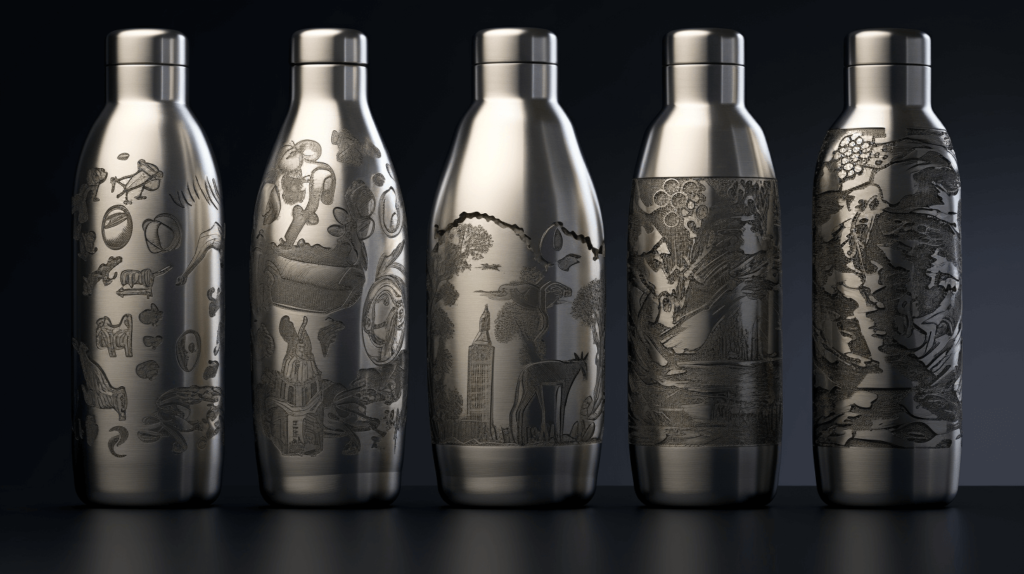
It's crucial for stainless steel water bottle manufacturers to prioritize research and development (R&D) in order to stay ahead of the competition. R&D helps companies identify new materials, improve production processes, and develop innovative products that meet customer needs.
Through effective research methods such as market analysis, product testing, and material experimentation, manufacturers can ensure that their products are high-quality and meet industry standards.
Funding sources play a critical role in supporting R&D efforts. Manufacturers can obtain funding from various sources such as government grants, private investors, or internal company funds. These funds allow companies to invest in equipment upgrades, hire specialized talent, and conduct necessary research without depleting their cash reserves.
By securing adequate funding for R&D initiatives, manufacturers can remain competitive by staying up-to-date with the latest technologies and trends. The importance of R&D cannot be overstated for stainless steel water bottle manufacturing. It is an essential component that enables companies to create high-quality products while remaining competitive in the market.
Research methods such as market analysis and product testing, coupled with adequate funding sources, are key factors that contribute to successful R&D efforts. Any manufacturer looking to maintain a strong presence in the industry must make investing in R&D a top priority.
Key Areas of Research and Development
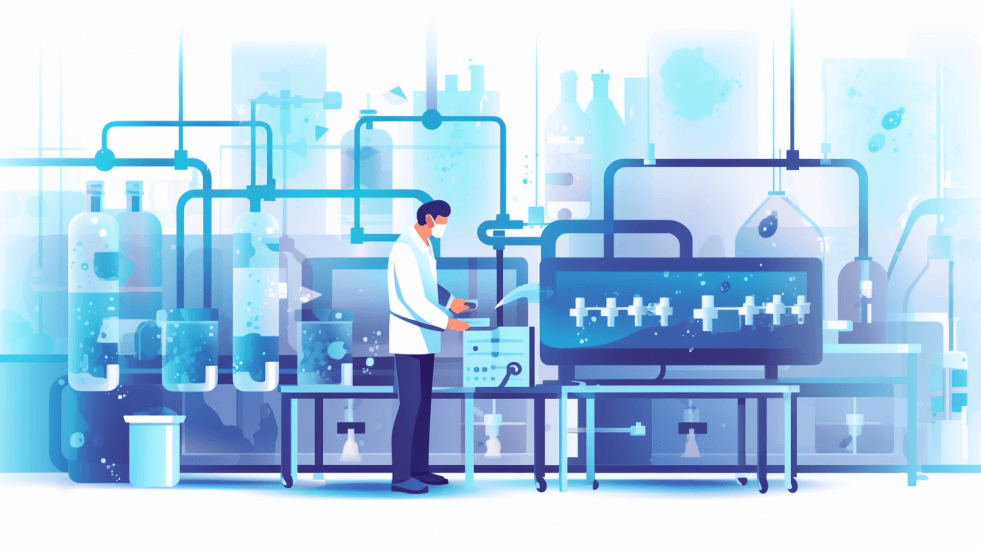
You'll be interested to know that one important aspect of improving stainless steel water bottle production involves identifying key areas for research and development. New innovations in materials, manufacturing processes, and design can lead to better quality products that are more appealing to consumers. Additionally, sustainable practices play a crucial role in the development of environmentally-friendly water bottles.
One area of research and development is focused on developing new materials. For instance, manufacturers are exploring the use of biodegradable plastics or recycled stainless steel as alternatives to traditional plastic or virgin metal. This not only reduces waste but also makes the production process more sustainable.
Another key area is improving manufacturing processes to reduce energy consumption and minimize waste. For example, some companies have implemented closed-loop recycling systems where water used in the manufacturing process is filtered and reused instead of being discharged as wastewater. This approach leads to significant reductions in both energy consumption and resource depletion.
Lastly, design innovation is playing an increasingly important role in driving consumer demand for stainless steel water bottles. Manufacturers are creating unique shapes and styles that appeal to consumers' sense of aesthetic while also offering functional benefits such as improved grip or easier cleaning. These developments demonstrate how research and development can play a vital part in driving product evolution towards sustainability while meeting customer needs at the same time.
Material Science Research
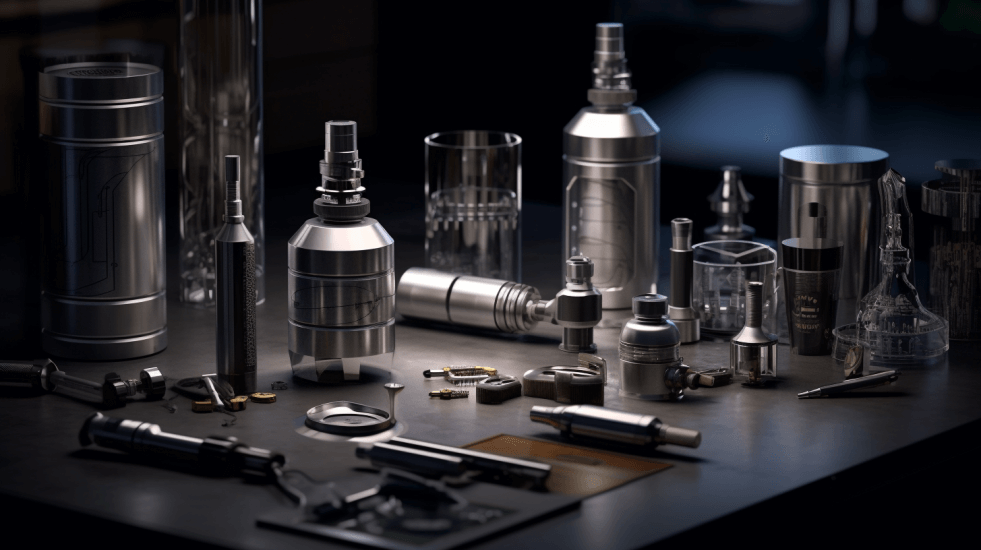
If you're curious about what goes into making a high-quality, sustainable water bottle, understanding the latest material science research is crucial.
Stainless steel is a popular choice for water bottles due to its durability and resistance to corrosion. Material properties such as strength, toughness, and ductility are critical determinants of the quality of stainless steel used in these products.
Testing methods play an essential role in ensuring that manufacturers use the best quality stainless steel for their products. Identifying defects and weaknesses in materials can help improve product performance and reduce failure rates.
Innovative coatings and surface treatments can also enhance the durability of stainless steel water bottles by adding an extra layer of protection against harsh environmental conditions.
Material science research plays a vital role in the production of high-quality stainless steel water bottles. Manufacturers must incorporate innovative coatings and surface treatments while using advanced testing methods to ensure that their products meet industry standards. By doing so, they not only produce sustainable products but also satisfy consumer demand for eco-friendly alternatives to single-use plastic bottles.
Manufacturing Process Research
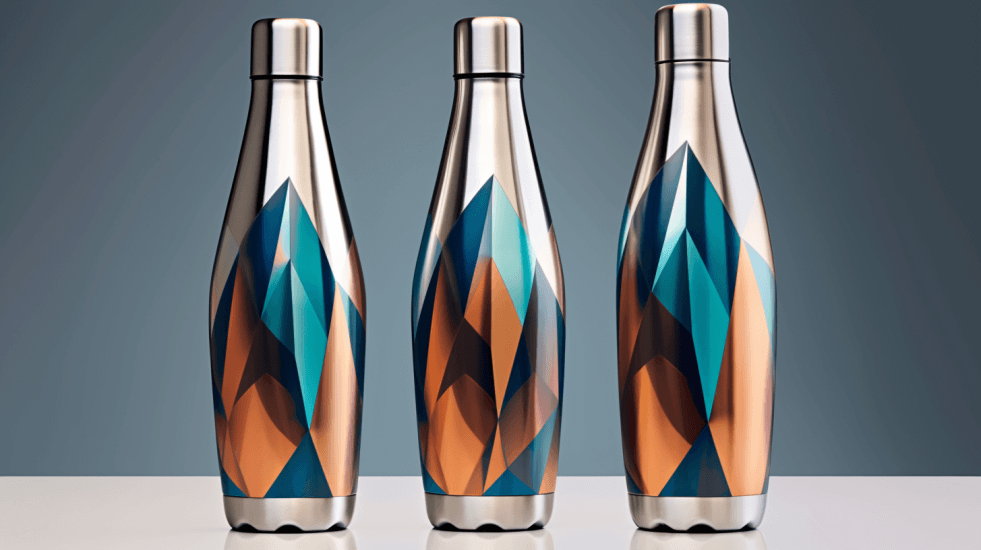
Sophisticated analyses of the production process are necessary to ensure that high-quality, eco-friendly water bottles can be manufactured efficiently and cost-effectively. This is where manufacturing process research comes in. It involves studying various aspects of the production line such as machinery, raw materials, and labor to identify areas where improvements can be made.
The ultimate goal is to optimize the entire production process while minimizing waste and environmental impact. Manufacturing efficiency is a key focus area in this type of research. By analyzing every step in the production line, researchers can identify bottlenecks or inefficiencies that lead to delays or increased costs.
They then propose solutions such as reorganizing work stations or investing in new equipment that will increase productivity and reduce expenses. Sustainability measures are another important consideration in this type of research as manufacturers strive to minimize their carbon footprint by reducing energy consumption, using recycled materials, and implementing green practices throughout the production process.
Manufacturing process research plays a critical role in ensuring that stainless steel water bottles are produced efficiently and sustainably. By analyzing every aspect of the production process from raw materials to finished products, researchers can identify areas for improvement and propose solutions that minimize waste while maximizing productivity.
As demand for eco-friendly products increases, it's essential that manufacturers continue to invest in this type of research so they can stay ahead of the curve and deliver high-quality products at competitive prices.
Product Design Research
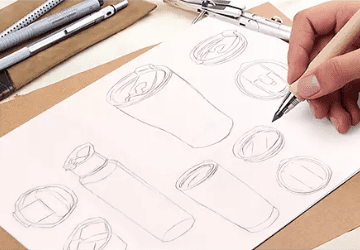
Let's delve into how product design research plays a crucial role in creating water bottles that are both functional and aesthetically pleasing. As manufacturers of stainless steel water bottles, understanding user preferences is essential to stay ahead of the competition.
Product design research can provide valuable insights into the features that customers value the most. To conduct effective product design research, it's important to consider various design elements such as size, shape, color, and material.
For example, studies have shown that customers prefer water bottles with a capacity between 16-24 ounces. Additionally, ergonomic designs that fit comfortably in the hand and are easy to carry are highly sought after. Color choices also play an important role in consumer decision-making; neutral colors like black and gray tend to be more popular than brighter hues.
By conducting thorough product design research that takes into account user preferences and key design elements, manufacturers can create stainless steel water bottles that meet customer needs while staying true to their brand image. Attention to detail is crucial when it comes to designing products that will stand out in a crowded market.
Whether it's incorporating unique features or experimenting with different materials, taking the time to understand what customers want will lead to successful product development in the long run.
Impact of Research and Development on the Industry
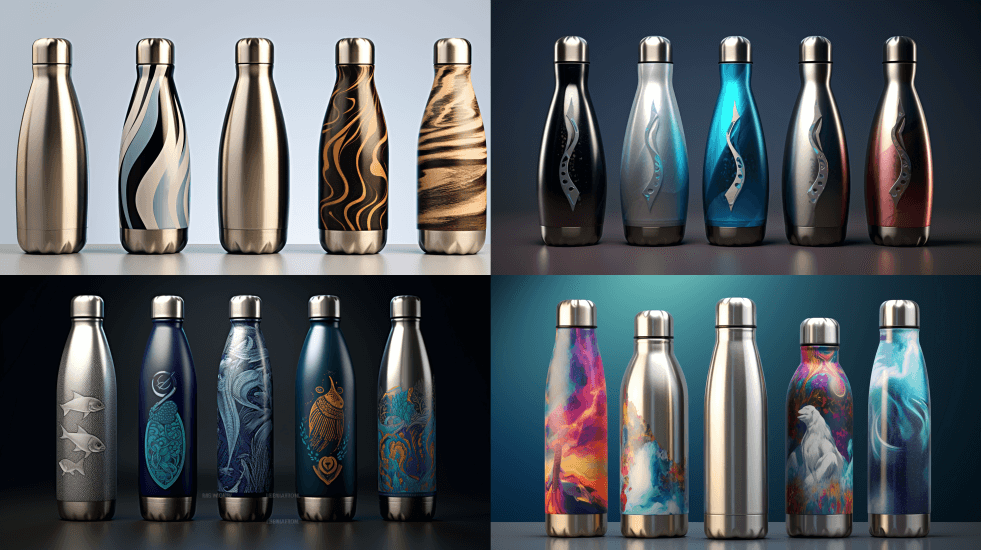
As a manufacturer in the stainless steel water bottle industry, you must understand that research and development (R&D) is key to achieving growth and innovation. By investing in R&D, you can bring new products to market faster, improve existing ones, and stay ahead of competitors who may be slower to innovate.
Additionally, R&D plays an important role in ensuring consumer satisfaction by identifying their needs and preferences. This enables you to design and deliver products that meet or exceed their expectations.
Growth and Innovation
With innovation at the forefront, stainless steel water bottle manufacturers are constantly growing their product offerings to meet the evolving needs of consumers. Innovation strategies have played a huge role in keeping up with market trends and staying ahead of competitors.
The industry has witnessed an increase in growth and diversification as companies invest more in research and development. To sustain this growth, manufacturers have been exploring new materials, designs, and functionalities for stainless steel water bottles.
Some innovative products that have emerged include double-walled vacuum-insulated bottles that keep drinks cold or hot for longer periods, collapsible bottles that are easy to carry around, and self-cleaning bottles that use UV-C technology to purify water. By offering unique features and benefits, manufacturers can differentiate themselves from others in the market and appeal to a broader consumer base.
Market Competition
Now that you have a better understanding of the growth and innovation in stainless steel water bottle manufacturing, it's time to delve into another important aspect—market competition.
The stainless steel water bottle market is highly competitive, with many players vying for consumer attention. As such, conducting a thorough market analysis is crucial for any manufacturer looking to stay ahead.
One key factor in this analysis should be pricing strategies. With so many options available to consumers, price can often be the deciding factor when it comes to purchasing a stainless steel water bottle. Manufacturers must strike a delicate balance between offering competitive prices and maintaining profitability.
This requires careful consideration of production costs, profit margins, and consumer demand. Ultimately, by staying attuned to the dynamics of the market and adjusting pricing strategies accordingly, manufacturers can position themselves for success in an increasingly crowded field.
Consumer Satisfaction
Nothing is more important to manufacturers than ensuring that their customers are completely satisfied with the stainless steel water bottles they purchase. In order to achieve this, it's crucial for manufacturers to understand consumer behavior and product preferences.
Consumers today are becoming increasingly conscious of the environmental impact of their purchases and are seeking sustainable alternatives to single-use plastic water bottles. This has led to a rise in demand for stainless steel water bottles as they can be reused multiple times and have a longer lifespan.
Product preferences also play a significant role in consumer satisfaction. Consumers value design, functionality, and durability when selecting a stainless steel water bottle. Manufacturers need to invest in research and development to create products that meet these demands while also being affordable.
Understanding consumer feedback through surveys and online reviews can provide valuable insights into areas of improvement in product design or features that consumers may want added in future iterations of the product.
Ultimately, by focusing on meeting customer needs and expectations, manufacturers can increase brand loyalty and gain a competitive edge in the market.
Challenges and Opportunities in Stainless Steel Water Bottle Manufacturing
Despite the challenges faced in stainless steel water bottle manufacturing, there are still opportunities for innovation and growth within the industry. One of the biggest challenges is managing the supply chain effectively. The production process involves multiple stages, including mining, refining, shaping, and distributing raw materials. Each stage has its own set of environmental impacts that need to be managed carefully to ensure sustainability.
Sustainability is a key concern for manufacturers because consumers are becoming increasingly aware of their impact on the environment. They're looking for products that have a minimal carbon footprint and are made from environmentally-friendly materials. Stainless steel water bottles offer an eco-friendly alternative to plastic bottles, but they still require energy-intensive processes to manufacture. To meet consumer demand for sustainable products, manufacturers need to find ways to reduce their environmental impact throughout the entire supply chain.
Another challenge faced by stainless steel water bottle manufacturers is creating designs that stand out in a crowded market. While stainless steel provides a sleek and modern look, it can be difficult to differentiate one brand from another based on appearance alone. Manufacturers need to focus on creating unique features or functionalities that add value for consumers.
For example, some brands offer insulated bottles that keep drinks hot or cold for longer periods of time than traditional stainless steel bottles. By focusing on innovation and offering added benefits to consumers, manufacturers can create new opportunities for growth in this competitive industry.
Future Directions for Research and Development
As you look to the future, there are several key areas of focus for research and development in stainless steel water bottle manufacturing.
Emerging technologies offer exciting opportunities for innovation, from advanced materials to smart features that enhance usability.
Collaboration with industry partners can drive progress in manufacturing efficiency and sustainability.
Finally, staying ahead of changing consumer trends is critical to meet evolving needs and preferences in the marketplace.
By prioritizing these areas, you can position your company as a leader in this competitive space.
Emerging Technologies
New technologies are revolutionizing the stainless steel water bottle industry, making them more durable and environmentally friendly. Here are some of the emerging technology applications that are driving this transformation:
- Nanotechnology - This technology involves manipulating matter at the nanoscale level to create materials with unique properties. In stainless steel water bottles, nanotechnology is being used to create a super-smooth surface that resists bacteria growth and makes cleaning easier.
- 3D printing - This technology has opened up new possibilities for designing and manufacturing complex shapes and structures that were previously impossible or prohibitively expensive to produce. With 3D printing, it's possible to create customized bottle designs that meet specific customer needs while minimizing material waste.
- Smart sensors - These sensors can be embedded in water bottles to monitor factors like temperature, pressure, and water quality in real-time. They can help users stay hydrated by reminding them when it's time to drink or alerting them if their water is contaminated.
As manufacturers continue to explore these emerging technologies applications, sustainability considerations will remain a top priority. For example, new production methods must minimize energy consumption and waste generation while maximizing recyclability of materials.
The result will be a new generation of stainless steel water bottles that deliver superior performance while minimizing their environmental impact.
Industry Collaboration
Industry leaders are working together to create more sustainable practices for producing and distributing stainless steel water bottles. With the increasing demand for eco-friendly products, companies recognize the importance of collaborating to reduce their carbon footprint and improve manufacturing processes.
Through industry collaboration, stakeholders can pool resources and expertise to develop cost-effective solutions that benefit both the environment and their bottom line. Collaboration benefits include knowledge sharing, reduced costs through joint purchasing agreements, improved supply chain management, and increased marketability through shared branding efforts.
However, there are also industry challenges such as intellectual property rights, competitive pressures, and differing priorities among stakeholders. To overcome these challenges and reap the benefits of collaboration, clear communication channels must be established between all parties involved.
By leveraging each other's strengths and addressing common obstacles together, industry leaders in stainless steel water bottle manufacturing can drive innovation towards a more sustainable future.
Consumer Trends
You may have noticed a shift in your purchasing habits towards more environmentally-friendly and reusable options, like insulated water bottles. This trend isn't unique to you; consumers around the world are becoming increasingly conscious of sustainability concerns when making purchasing decisions.
As a result, stainless steel water bottle manufacturers are responding by offering products that are both functional and eco-friendly. Design preferences also play a role in consumer trends for stainless steel water bottles. Consumers want products that not only perform well but also look good while doing so.
Many manufacturers are incorporating sleek and modern designs into their products to appeal to this preference. Additionally, customization options such as personalized engravings or color choices allow customers to make their water bottles unique to them.
By staying up-to-date on these consumer trends, manufacturers can continue to meet the demands of their customers while advancing research and development efforts in stainless steel water bottle manufacturing. Some of the features that consumers are looking for in these products include insulated designs that keep beverages hot or cold for extended periods of time, lightweight yet durable materials that are easy to transport, and customizable features such as personalization options or interchangeable lids.
Frequently Asked Questions
What is the cost of manufacturing stainless steel water bottles compared to other materials?
When comparing the cost of manufacturing stainless steel water bottles to other materials, production expenses and material sustainability are key factors to consider.
Stainless steel is generally more expensive than plastic or aluminum, but it also has a longer lifespan and can be recycled indefinitely without losing its quality. Additionally, the durability of stainless steel reduces the need for frequent replacements.
Production expenses for stainless steel water bottles include the cost of raw materials, labor, energy consumption during manufacturing and transportation. These costs may vary depending on several factors such as location and manufacturer size.
In terms of sustainability, stainless steel is considered one of the healthiest materials for drinking water with no risk of leaching harmful chemicals into liquids like some plastics do.
Overall, while stainless steel water bottle production may have higher initial costs compared to other materials, its long-term durability and environmental benefits make it a worthwhile investment in terms of both financial savings and sustainable practices.
How does the durability of stainless steel water bottles compare to other materials?
Stainless steel water bottles are renowned for their durability benefits. Compared to other materials such as plastic or glass, stainless steel boasts superior strength and resistance to damage caused by drops, impacts, and extreme temperatures. A comparative analysis of various materials used in the manufacturing of water bottles reveals that stainless steel is one of the most robust options available on the market.
In terms of longevity, stainless steel water bottles can last for years without succumbing to wear and tear or accumulating damages that compromise their functionality. This makes them an excellent choice for individuals seeking a long-lasting and reliable option for carrying liquids.
What are the environmental impacts of stainless steel water bottle manufacturing?
To address the environmental impacts of stainless steel water bottle manufacturing, it's important to conduct a life cycle analysis and implement sustainable production methods.
This analysis should consider all stages of the product's life cycle, from raw material extraction to end-of-life disposal.
Sustainable production methods may include using renewable energy sources, minimizing waste through recycling and reusing materials, and reducing greenhouse gas emissions.
By implementing these practices, manufacturers can reduce their environmental footprint and contribute to a more sustainable future.
Are there any regulations or standards for the production of stainless steel water bottles?
To answer your question about regulations and standards for stainless steel water bottle production, it's important to note that regulatory compliance is crucial in ensuring the safety and quality of these products.
There are multiple standards established by organizations such as the International Organization for Standardization (ISO) and the American Society of Mechanical Engineers (ASME). These standards outline specific guidelines for material composition, manufacturing processes, and product testing.
These regulations aim to minimize environmental impacts, ensure proper labeling and packaging, and ensure that stainless steel water bottles meet necessary safety requirements before they reach consumers. To comply with these regulations, manufacturers must carefully select materials based on their composition, thickness, and corrosion resistance properties. They must also implement appropriate manufacturing processes to produce high-quality products.
How does the market demand for stainless steel water bottles compare to other reusable water bottle options?
When it comes to the market comparison of stainless steel water bottles versus other reusable options, consumer preferences play a significant role.
While some consumers may prefer the durability and long-lasting nature of stainless steel bottles, others may opt for glass or plastic alternatives due to their lower price point or lighter weight.
Additionally, some consumers may prioritize features such as insulation or ease of cleaning over the material of the bottle itself.
Overall, market demand for stainless steel water bottles is strong but not necessarily dominant compared to other options, with consumer preferences and individual needs ultimately driving purchasing decisions.
Conclusion
Congratulations on finishing this article examining the role of research and development in stainless steel water bottle manufacturing! You've learned about the importance of research and development, as well as the key areas that are essential to the process.
Material science research plays an important role in determining which materials are best suited for use in water bottles, while manufacturing process research focuses on optimizing production methods. Product design research is also critical to ensuring that water bottles meet consumer demands.
The impact of research and development on the industry has been significant, resulting in improvements in product quality, durability, and safety. However, there are also challenges and opportunities facing manufacturers who wish to produce high-quality stainless steel water bottles.
Despite these challenges, future directions for research and development will continue to focus on improving product performance while maintaining environmental sustainability. Overall, with continued investment in research and development efforts, stainless steel water bottle manufacturing can continue to evolve and improve for years to come.

